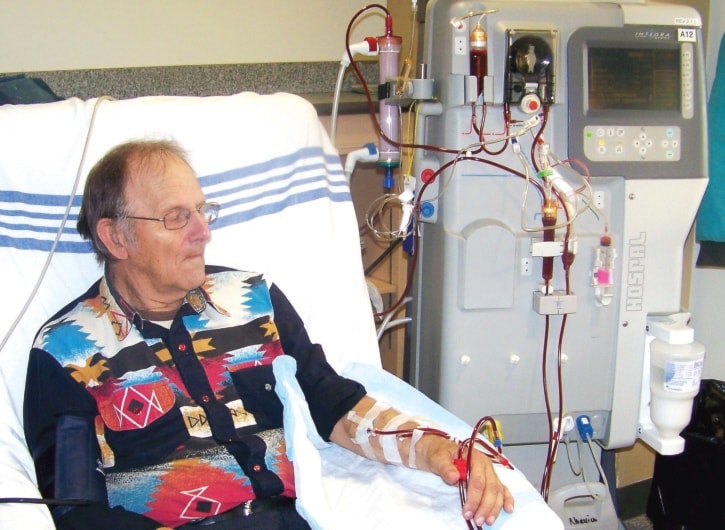The Rimbey and District Dialysis Support Group is stepping up their lobbying efforts to bring a satellite dialysis unit into Rimbey.
Members of the group including Irene Kurta-Lovell and June Norvila plan to take the group’s concerns to Alberta Ombudsman, Peter Hourihan and a group of investigators in Lacombe on March 12. They will meet with the group from 11 a.m. to 1 p.m. at the Lacombe Legion and invite any interested persons to come along.
Kurta-Lovell is aware of that the Red Deer Regional Hospital has run out of dialysis spaces and the situation has become critical, but she is concerned a private company will step in to create more dialysis units in Red Deer.
“That would, in no way, shape or form, relieve the stresses that rural patients have to deal with on an ongoing basis, he said.
She said even if Alberta Health Services decides to put more units in Red Deer, it will not help rural patients who live in outlying areas.
“We are certainly hoping after seven years of lobbying these people are considering Rimbey,” said Irene Kurta-Lovell.
Norvila from the Bentley area agrees. Her husband, Paul is a dialysis patient and the couple travel to Red Deer regularly for dialysis treatment. She said having a dialysis unit in Rimbey would make their life much easier.
“Rimbey has space. Local patients and those who bus to Red Deer from (as far away as) Lacombe could be transported to a Rimbey dialysis satellite unit and free up many spaces in Red Deer,” she said. “Why is this not a feasible option?”
Norvila is frightened to learn that administration from Edmonton will select which patients will have to travel to other outlying centres such as Stettler or Rocky Mountain House due to lack of space.
“They don’t understand each patient’s situation and don’t seem to grasp the concept of rural versus urban travel. Would it not make more sense that the local specialist, in discussion with his patients, make that decision? Patients are tired now, let alone adding another three hours travel time to their day riding on a bus.”
This winter has been especially difficult for travelling to Red Deer due to lots of snow and ice and slippery, drifting roads.
“Winter is not over yet,” said Norvila. “Having to travel in a four-wheel drive on the highway an hour each way and then also inside city limits and in parking lots is hard on the vehicle, uses more gas and is especially demanding on the driver.”
Last February the Renal Dialysis Rimbey Support Group presented a written submission pleasing their cause to Justice John Z. Vertes at the Alberta Health Services Preferential Access Inquiry in Calgary.
In their submission, the Rimbey group gave reasons why dialysis patients should have the option of being treated in Rimbey. Travelling to Red Deer for treatment is costly, time-consuming and dangerous with collision rates for the road traveled by Rimbey and area dialysis patients 60 per cent higher than the provincial average, the report stated.
Patient costs including meals, gasoline, parking fees and vehicle maintenance totaled more than $10,500 yearly for residents in the Rimbey area compared to under $2,000 for urban patients.
The time for rural patients to receive a dialysis treatment is 10 hours compared to six hours for an urban patient.
The Rimbey Review made several calls to a communication representative from Alberta Health Services regarding the dialysis situation at Red Deer Hospital, but the spokesperson did not provide a comment by press time.
